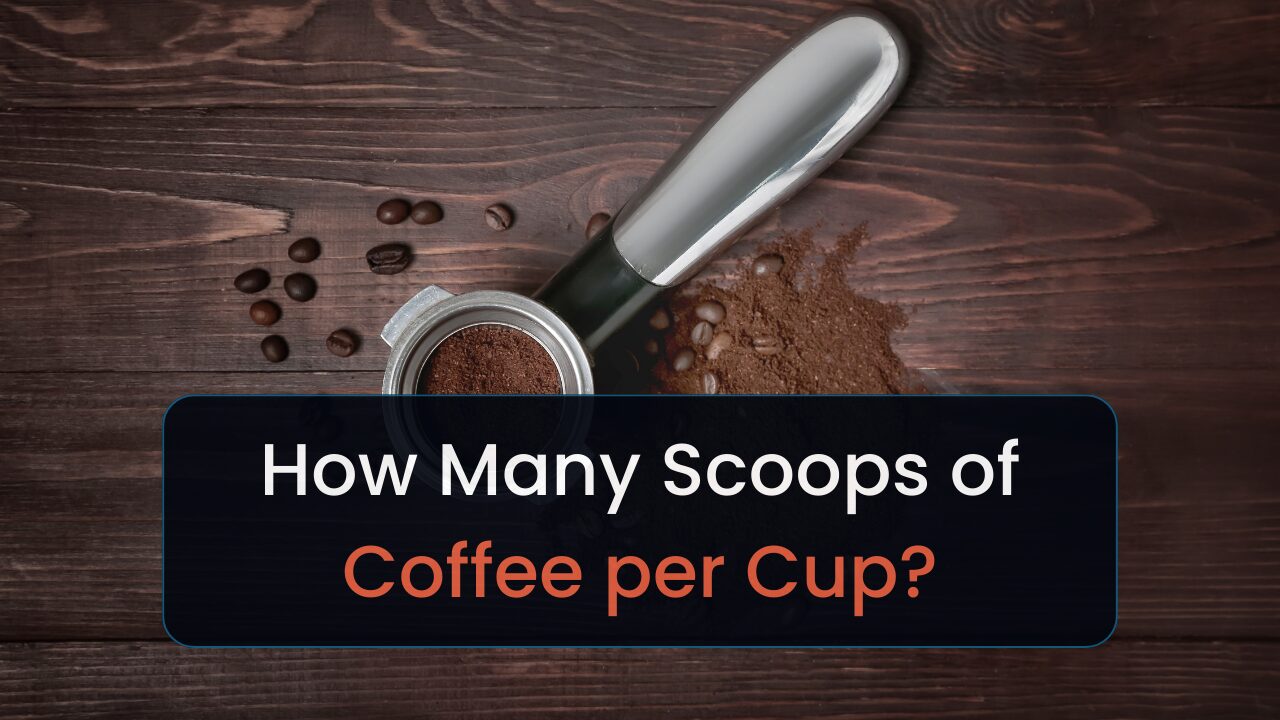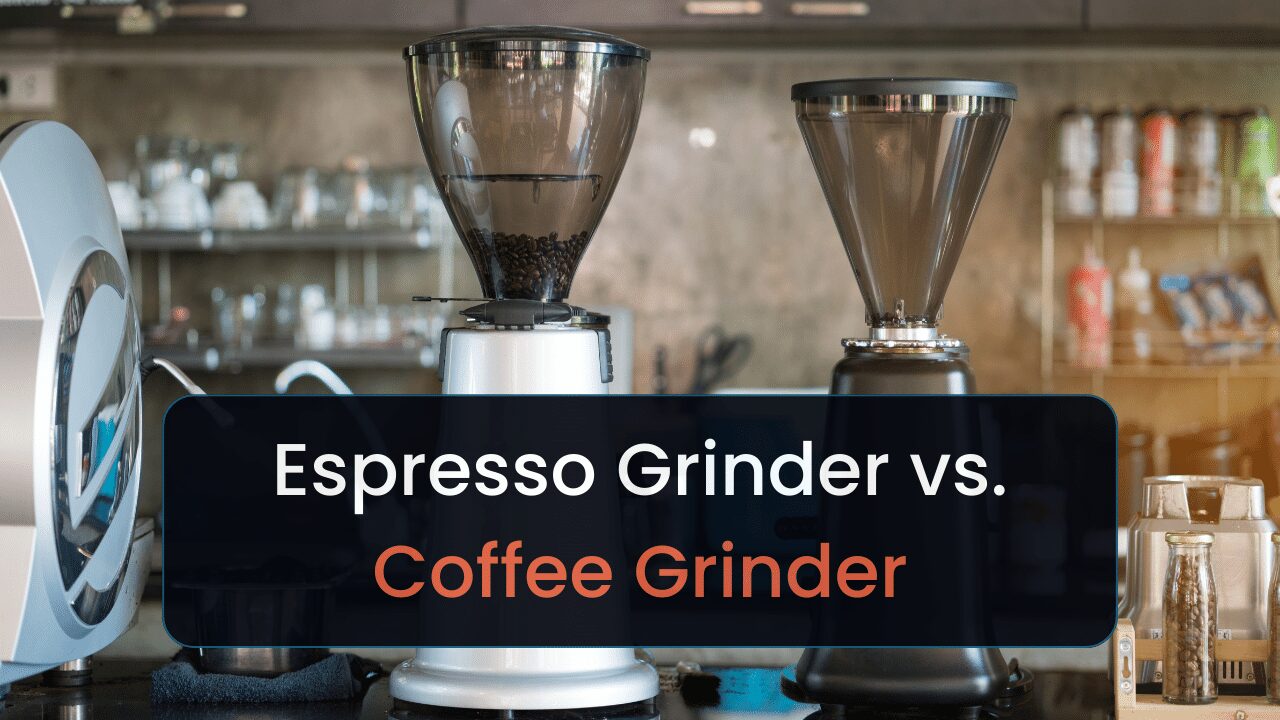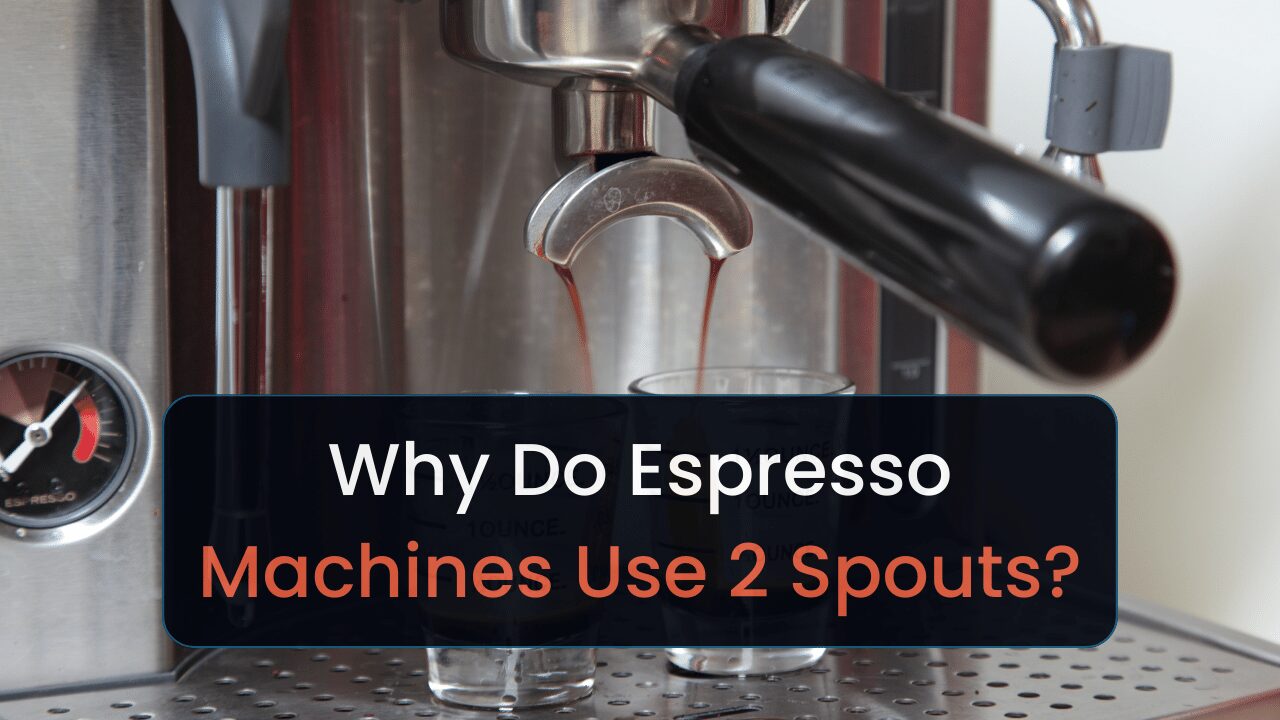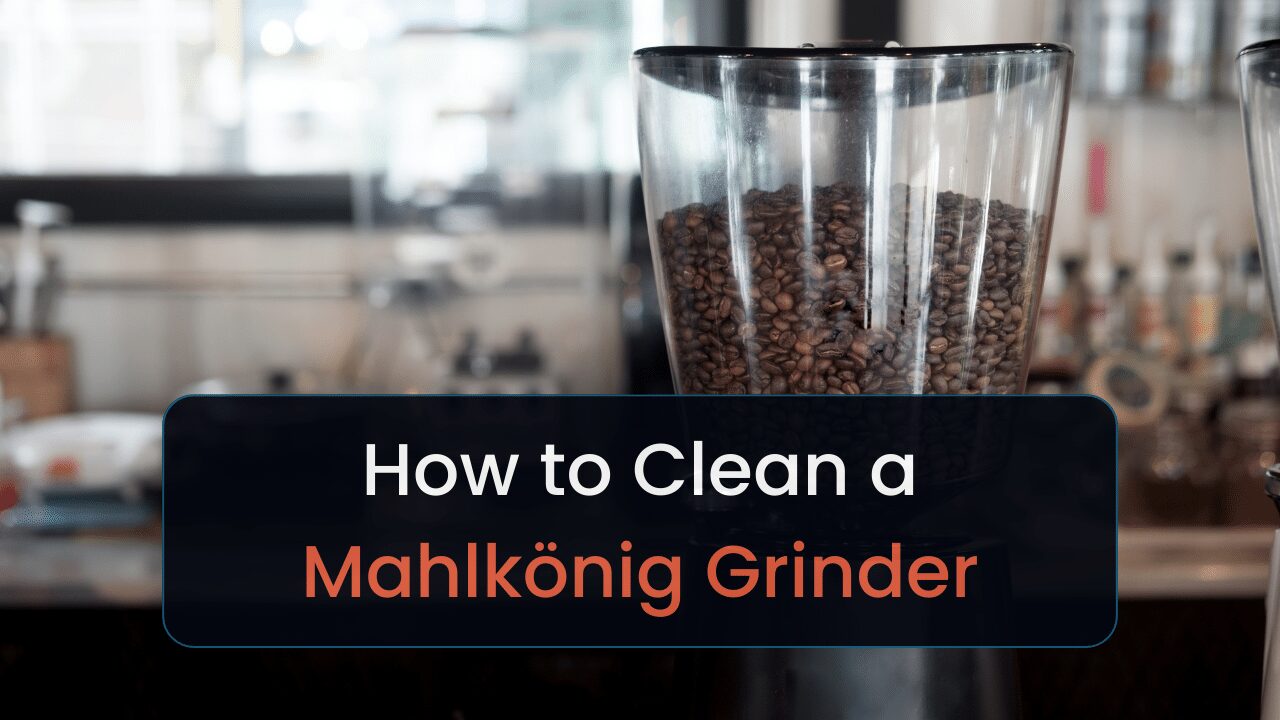This is our review of the best coffee filters in 2024.
I’m Tim, a coffee and espresso enthusiast. I brew several coffee drinks every day with various machines. And after several years of experience, I learned what types of filters work best.
Our top choice for coffee filters is the RUOYING Eco-Sopure Reusable Basket-Style Coffee Filter. Because it fits most drip coffee machines, is stainless steel, is affordable, and is easy to clean.
That said, the coffee filter you need depends mostly on your coffee machine and brewing method.
So to cover all types of coffee brewing, we made a list of the top ten coffee filters.
Keep reading to learn all about them.
Top 10 Coffee Filters for Home
- RUOYING Eco-Sopure Reusable Basket-Style Coffee Filter – Best Overall
- Melitta #6 Cone Coffee Filters, Natural Brown – Best paper filter
- Unbleached Basket Coffee Filters – Best Budget
- Reusable K Cups Coffee Pod Filters – Best for Keurigs
- Bolio Organic Hemp Reusable Coffee Filter – Best Environmentally Friendly
- Chemex Bonded Filter – Best for Chemex Pour-Over Coffee
- LHS Slow Drip Coffee Filter Metal Cone – Best for Stainless Steel Pour-Over
- Reusable 4 Cone Coffee Filter – Best for Metal Cone
- French Press Replacement Filters – Best for French Press
- Organic Cotton Cold Brew Coffee Bag – Best Reusable for Cold Brew
1. RUOYING Eco-Sopure Reusable Basket-Style Coffee Filter – Best Overall
![10 Best Coffee Filters in [currentyear] (Paper, Metal, & more) 1 ruoying eco sopure reusable basket style coffee filter](https://timscoffee.com/wp-content/uploads/2023/07/ruoying-eco-sopure-reusable-basket-style-coffee-filter.png)
| Best for | Mr Coffee, Black & Decker, BUNN, Cuisinart, and Hamilton |
| Material | Stainless steel |
| Reusable | Yes |
| Bleachable | N/A |
| Biodegradable | N/A |
| Quantity | 1 |
| Price | $$ |
Pros
- Stainless steel– no effect on taste
- Easy to clean
- Dishwasher safe
Cons
- Only fits certain coffee machines
- Smaller grinds can pass through
The RUOYING 8-12 Cup Reusable Basket Permanent Coffee Filter is a reusable stainless steel coffee filter it is our top choice because it is compatible with the most popular drip coffee machines.
These machines include Mr. Coffee, Bonavita, Black & Decker, BUNN, Cuisinart, and Hamilton Beach machines that have a basket-style filter. (make sure you choose the right option when you purchase it.)
All of these machines come with a plastic filter, which is low-quality, can get holes easily, and may require the use of paper filters.
This metal filter replaces the plastic basket entirely and eliminates the need for paper filters, saving you money over time.
One of the benefits of this stainless steel filter is that it has no effect on the taste of your coffee, compared to paper filters which may add a subtle cardboard taste.
It is also extremely easy to clean. Just put it in your sink, flip it upside and spray it with water. You can also put it in your dishwasher for deeper cleaning.
Some users report grounds getting stuck in the filter mesh and passing through it. I suspect this is due to misuse– using a fine grind size and/or not rinsing thoroughly after each use.
It is relatively affordable but costs much more than paper filters. But you can use it indefinitely.
Overall, this RUOYING coffee filter is a great choice if you never want to deal with paper filters again (if it is compatible with your drip coffee machine).
2. Melitta #6 Cone Coffee Filters, Natural Brown – Best Paper Filter
![10 Best Coffee Filters in [currentyear] (Paper, Metal, & more) 2 melitta 6 cone coffee filters natural brown](https://timscoffee.com/wp-content/uploads/2023/07/melitta-6-cone-coffee-filters-natural-brown.png)
| Best for | Pour-over coffee makers and 10-cup electric cone coffee makers |
| Material | Paper |
| Reusable | No |
| Bleachable | Unbleached (natural) |
| Biodegradable | Yes |
| Quantity | 12 |
| Price | $$$ |
Pros
- Fits various pour-over and electric coffee machines
- Micro perforations allow full coffee flavors to pass
- Double crimping prevents bursting
Cons
- Expensive
- Some users report bad tastes
The Melitta #6 Cone Coffee Filters, Natural Brown coffee filters are our runner up because they are high-quality, fit various coffee brewers, and allow the coffee’s full flavor to pass through.
These filters are compatible with pour-over coffee brewers and 10-cup electric cone coffee makers.
Melitta markets these as “super-premium” coffee filters, which I think is accurate based on their design and quality.
The filters have Microfine Flavor Enhancing perforations, which allow the full flavor of the coffee to pass through while still catching the grounds.
Plus, the filters are double crimped, which prevents bursting, common with cheaper filters that have a single crimp. The crimp line is where the ends of the filter attach together.
Another advantage is that these filters are unbleached, meaning they never come in contact with harmful chemicals.
And they are biodegradable and compostable– so you don’t have to harm the environment by sending them to the garbage dump. Add them to your compost instead.
One downside of these Melitta filters is that they are expensive. Compared to other budget paper coffee filters, they cost dollars instead of pennies– which is significant.
Additionally, some customers report that the filter imparts a bad taste to the coffee. However, I couldn’t detect any taste differences.
If these Melitta filters are too pricey for you, the Rupert and Jeoffrey’s Trading Co. coffee filters are a great alternative.
3. Rupert and Jeoffrey’s Trading Co. Unbleached Basket Coffee Filters – Best Budget
![10 Best Coffee Filters in [currentyear] (Paper, Metal, & more) 3 unbleached basket coffee filters](https://timscoffee.com/wp-content/uploads/2023/07/unbleached-basket-coffee-filters.png)
| Best for | Drip coffee machines |
| Material | Paper |
| Reusable | No |
| Bleachable | Unbleached (natural) |
| Biodegradable | Yes |
| Quantity | 200, 500, or 1000 |
| Price | $ |
Pros
- Inexpensive
- Unbleached (natural)
- Made in the USA
Cons
- Thin and could burst
- Too short for more than 8 cups of coffee
The Rupert and Jeoffrey’s Trading Co. Unbleached Basket Coffee Filters are our budget choice because they are inexpensive, decent quality, and made in the USA.
They are made to fit basket-type drip coffee machines from several brands– Mr. Coffee, Cuisinart, Ninja, Black+Decker, and Elite Gourmet, to name a few.
You simply load one of these filters into your machine’s grounds reservoir, load it with grounds, and hit start. Then, throw it out or add it to your compost bin when you’re done.
These coffee filters are one of the most affordable options on the market, costing mere pennies each.
You can also save more money by buying higher quantities– packs of 200, 500, and 1000 are available.
These filters are biodegradable and made in the US, which means they never spend months on a cargo ship where they may get contaminated or deteriorate.
Furthermore, they are unbleached and have a natural brown color. This means they don’t come into contact with bleach during manufacturing, which may be harmful. [2]
A downside of these filters is that they are rather thin and can burst, leaving grounds in your brewed coffee.
And some customers report that they are too short for an 8-cup brew. But I suspect they are just adding too many coffee grounds.
Overall, these Rupert and Jeoffrey’s Trading Co. basket coffee filters are the best choice if you want the most frugal paper filter option.
4. Reusable K Cups Coffee Pod Filters – Best for Keurigs
![10 Best Coffee Filters in [currentyear] (Paper, Metal, & more) 4 reusable k cups coffee pod filters](https://timscoffee.com/wp-content/uploads/2023/07/reusable-k-cups-coffee-pod-filters.png)
| Best for | Keurigs |
| Material | Stainless Steel |
| Reusable | Yes |
| Bleachable | N/A |
| Biodegradable | N/A |
| Quantity | 1 |
| Price | $$ |
Pros
- Compatible with nearly all Keurig machines
- 100% Stainless steel (no plastics)
- Easy to clean
Cons
- Lid has paint which can chip
The Reusable K Cups Coffee Pod Filter is the best coffee filter option for Keurigs because it is reusable, doesn’t contain harmful materials (like BPAs and lead), and is easy to use and clean.
It works with almost all Keurigs that accept a standard-size K-cup. In fact, I haven’t heard of a K-cup brewer it doesn’t work with.
This stainless steel K-cup filter entirely replaces those single-use K-cup pods pre-filled with coffee grounds. So, it greatly reduces waste and can save you a lot of money.
Instead of buying expensive K-cups, you just fill this filter with coffee grounds, put it inside your Keurig, and hit the brew button. Then you empty and rinse it out when you’re finished.
Cleaning it is simple– knock the grounds into your trash, flip it over, and rinse out the remaining grounds in your sink. You can also throw it in your dishwasher for a deeper clean.
Unlike reusable plastic K-cup filters, this stainless steel filter has no BPAs, lead, DEHP, or other harmful byproducts. [1]
However, the lid has a layer of thin red vinyl paint which can chip away after using it. This is a significant drawback as we all don’t want paint chips in our coffee.
Thankfully, you can easily remove this red paint with steel wool or an SOS pad.
This stainless steel K-cup filter costs about the same as a box of K-cups. In my view, that makes it worth its cost since it will save me money on K-cup purchases for years to come.
5. Bolio Organic Hemp Reusable Coffee Filter – Best Environmentally Friendly
![10 Best Coffee Filters in [currentyear] (Paper, Metal, & more) 5 bolio organic hemp reusable coffee filter](https://timscoffee.com/wp-content/uploads/2023/07/bolio-organic-hemp-reusable-coffee-filter.png)
| Best for | Pour-over brewing |
| Material | 100% organic hemp |
| Reusable | Yes |
| Bleachable | N/A |
| Biodegradable | Yes |
| Quantity | 3 |
| Price | $$$ |
Pros
- Made out of 100% organic hemp
- Reusable hundreds of times
- Improves coffee flavor
Cons
- Difficult to clean
- Shrinks after use
The Bolio Organic Hemp Reusable Coffee Filter is our most environmentally friendly option because it is made of 100% organic hemp, is biodegradable, and reusable.
It works with pour-over coffee makers and has various sizes available to fit your specific unit– No. cone, No. 2 flat, No. 4 flat, No. 6 Flat, Kalita 185, cold brew, and square chem sizes.
These hemp filters replace single-use paper filters. And since you can reuse them several hundred times, they will save you money in the long run.
However, they are not the easiest to clean. When they are wet, they get soggy and coffee grounds stick to them.
Another downside is that they can shrink after several uses. But for the most part, the shrinkage is negligible.
For most coffee drinkers, the hemp in this filter adds a unique subtle taste that improves the coffee’s flavor– which I agree with.
Compared to paper filters, these hemp filters are much more expensive. But since they last for hundreds of uses and are eco-friendly, the extra cost makes sense.
6. Chemex Bonded Filter – Best for Chemex Pour-Over Coffee
![10 Best Coffee Filters in [currentyear] (Paper, Metal, & more) 6 chemex bonded filter](https://timscoffee.com/wp-content/uploads/2023/07/chemex-bonded-filter.png)
| Best for | Chemex pour-over brewers |
| Material | Paper |
| Reusable | No |
| Bleachable | Bleached |
| Biodegradable | Yes |
| Quantity | 100 |
| Price | $ |
Pros
- Durable
- Include air vent which allows coffee to filter better
Cons
- Requires some assembly
- Pricier than other paper filters
The Chemex Bonded Filter is the best coffee filter for Chemex pour-over coffee makers because it fits them perfectly, is 20-30% thicker (more durable) than other filters, and has an air vent that helps the coffee filter better.
Although you can make any cone-shaped coffee filter fit your Chemex, these filters fit them the best. This ensures you never get grounds in your coffee.
They fit all Chemex Coffeemakers except CM-1, CM-1C, and CM-1GH
These filters have three layers and a groove on the side that acts like an air vent. This vent allows the coffee to drip through the grounds more efficiently, maximizing the taste of your coffee.
Plus, they are 20-30% thicker than most coffee filters on the market, making it nearly impossible to tear or burst during brewing.
This thicker material helps keep bitterness, oils, and grounds out of your coffee.
One downside of these filters is that you have to fold them in half a few times, then open them into a funnel shape while holding two layers in place.
But this is only a few seconds of work once you get the hang of it.
Another downside is that they are more expensive than other paper coffee filters, but they are more durable and filter better.
Overall, you can beat these Chemex Bonded Filters for your Chemex brewer.
7. LHS Slow Drip Coffee Filter Metal Cone – Best Stainless Steel Pour-Over
![10 Best Coffee Filters in [currentyear] (Paper, Metal, & more) 7 lhs slow drip coffee filter metal cone](https://timscoffee.com/wp-content/uploads/2023/07/lhs-slow-drip-coffee-filter-metal-cone.png)
| Best for | Pour-over brewing |
| Material | Stainless steel |
| Reusable | Yes |
| Bleachable | N/A |
| Biodegradable | N/A |
| Quantity | 1 |
| Price | $$ |
Pros
- Fine mesh blocks coffee grounds of all sizes
- Use directly over your cup of coffee
- Easy to clean, include brush
Cons
- Base can break after many uses
- Non-slip ring can get damaged
The LHS Slow Drip Coffee Filter Metal Cone is the best stainless steel pour-over filter because it filters all grind sizes, is easy to clean, and you can use directly over your coffee cup.
It is a filter and pour-over brewer, all-in-one. Just place it over your coffee cup, add grounds, and slowly pour hot water over them.
Since it is stainless steel, it doesn’t add any subtle paper flavors to your brew. Plus, it is really easy to clean– just dump the grounds and rinse it off.
It even includes a wire brush to help remove any grounds that get stuck in the filter mesh.
It has an anti-slip rubber ring that prevents it from sliding off your cup while you’re pouring the hot water. However, this ring is rubber and can break or stretch over time.
That said, you don’t need it to complete your brew. It is just a prevention measure for spills.
Some customers report that the base connection (where the cone and disk snap together) broke after several uses.
That said, I think these were flukes, as mine is holding up perfectly.
If you want a great way to brew single cups of coffee quickly, this LHS Slow Drip Coffee Filter Metal Cone is the best option.
If you want a metal cone filter for your drip-coffee machine instead, check out the reusable 4-Cone Coffee Filter.
8. Reusable 4 Cone Coffee Filter – Best Metal Cone
![10 Best Coffee Filters in [currentyear] (Paper, Metal, & more) 8 reusable 4 cone coffee filter](https://timscoffee.com/wp-content/uploads/2023/07/reusable-4-cone-coffee-filter.png)
| Best for | Drip coffee makers with cone-shaped filter housings |
| Material | Stainless steel |
| Reusable | Yes |
| Bleachable | N/A |
| Biodegradable | N/A |
| Quantity | 1 |
| Price | $$ |
Pros
- Fits several drip coffee makers
- Durable and non-toxic
- Easy to clean and dishwasher safe
Cons
- Not a perfect fit for some machines
The Reusable 4 Cone Coffee Filter is the best metal cone filter for drip coffee machines because it fits many drip machines, is durable, and is simple to clean.
The coffee machines it fits include ones from Cuisinart, Ninja, Hamilton Beach Coffee Maker, Moccamaster, and KitchenAid (see the product page for the full list of compatible models).
This filter entirely replaces the plastic filters that come with these machines. It is entirely stainless steel and doesn’t require paper filters, which saves you money.
Plus, it doesn’t leave any trace flavor in your coffee since you never use paper. And unlike plastic, it is BPA-free and does not contain chemicals.
Like all stainless steel coffee filters, it is a breeze to clean. All you do is dump the grounds and rinse it.
One potential downside is that some purchasers report it not being a perfect fit in their machines, leading to grounds getting in their coffee.
That said, I suspect they didn’t put it in correctly (you have to line up the notches perfectly).
All-in-all, this reusable metal cone filter is the best alternative to the plastic filters that come standard with several drip coffee machines.
9. French Press Replacement Filters – Best for French Press
![10 Best Coffee Filters in [currentyear] (Paper, Metal, & more) 9 french press replacement filters](https://timscoffee.com/wp-content/uploads/2023/07/french-press-replacement-filters.png)
| Best for | French presses |
| Material | Stainless steel |
| Reusable | Yes |
| Bleachable | N/A |
| Biodegradable | N/A |
| Quantity | 6 |
| Price | $ |
Pros
- Fits most 8-cup French presses
- Stainless steel construction
- High-quality
Cons
- Can accidentally bend it
The French Press Replacement Filters are the best filters for French presses because they fit most 8-cup units, have a durable stainless steel construction, and are great quality.
These are replacement filters that replace the existing filter on your French press (if/when it fails).
The filters fit almost all 8-cup French press designs (4-inch diameter) and are easy to swap out.
They have a stainless steel mesh that captures all coffee grounds larger than a medium grind size.
Plus, it has a reinforced metal ring around the edge which prevents fraying and ensures a long life.
One downside of these replacement French press filters is that you can bend them easily. And when that happens, it won’t seal around the edge of the press and let grounds through.
You just have to be careful with it.
As with all metal coffee filters, a quick easy rinse cleans these filters well.
Looking for a cold-brew coffee filter? The organic cold brew coffee bag is what I use.
10. Organic Cotton Cold Brew Coffee Bag – Best Reusable for Cold Brew
![10 Best Coffee Filters in [currentyear] (Paper, Metal, & more) 10 organic cotton cold brew coffee bag](https://timscoffee.com/wp-content/uploads/2023/07/organic-cotton-cold-brew-coffee-bag.png)
| Best for | Cold brews |
| Material | Cotton |
| Reusable | Yes |
| Bleachable | N/A |
| Biodegradable | Yes |
| Quantity | 2 |
| Price | $$ |
Pros
- Reusable
- Able to hold lots of grounds
- Works in any container (pitcher, jar, etc.)
Cons
- Harder to clean than other options
The Organic Cotton Cold Brew Coffee Bag is the best reusable filter for cold brewing coffee because it is reusable, simple to use, organic, and works in any container.
All you have to do is fill this cotton filter bag with coffee grounds, tie its drawstring, and throw it in a pitcher of cold water.
After you let it sit in your fridge overnight, you’ll have some perfectly brewed cold-brew coffee. Then, just take the bag out, dump the grounds, and clean the bag.
This filter is made out of 100% cotton, so it is completely organic. It is much more durable than paper filters and won’t tear.
However, clean-up takes longer. You have to flip the bag inside out and rinse it thoroughly to remove all the coffee grounds.
Still, it is an affordable and easy way to brew cold brew coffee without needing a special container.
Coffee Filter Buying Guide
Here are the top considerations when choosing a coffee filter.
| What to consider | Why it’s important |
| Coffee brewing method | Your filter needs to be compatible with your brewing method (drip machine, French press, Keurig, etc.) |
| Material | Filters can range from cotton and paper to stainless steel and other metals |
| Reusable | Reusable filters are better for the environment and conservation |
| Environmentally friendly | Biodegradable filters and ones made of natural materials are better for the Earth |
| Cost/Budget | Filters range from inexpensive to costly, depending on the material |
| Taste/Flavor | Certain filter types can affect your coffee’s taste |
Coffee Brewing Method
The method or machine you use to brew your coffee is the most significant consideration when you’re looking for a coffee filter.
For example, the filter for a drip coffee machine won’t work on a Keurig and vice versa. You have to find a filter that works for your specific coffee machine.
In some cases, drip coffee machines use a uniquely sized filter basket that requires a specific filter (or replacement basket).
Additionally, if you’re using a pour-over coffee maker (and other machines), you need to ensure you use a filter compatible with your grind size– fine grinds can slip through some mesh metal filters.
Material
The coffee filter’s material is something else you should weigh during your selection.
Stainless steel reusable filters cost more upfront but will save you the cost of buying single-use filters in the future. Plus, they are better for the environment.
On the flip side, paper filters cost just $0.03-$0.05 each. They are easy to use, and some are biodegradable.
You can also get reusable cotton/fabric filters that cost somewhere between paper and metal filters and last for several uses.
Reusable
For the most part, reusable coffee filters can save you money over the life of your coffee machine.
Even though single-use paper filters are inexpensive, the cost can add up over several years.
That said, paper filters are easier to manage; you just grab it and toss it in your trash (or compost bin)– no rinsing necessary.
Environmentally Friendly
Paper filters aren’t the best for the environment, as their production requires the use of trees.
Some options, like hemp-based filters, are made from natural, biodegradable materials.
Additionally, stainless steel is a top choice since it reduces paper consumption as well.
Cost/Budget
Cost is an important consideration when you are shopping for coffee filters.
For the most part, unbleached paper filters are the cheapest, hemp and cotton filters are more expensive, and metal filters cost the most.
That said, paper filters are single-use, hemp/cotton lasts for several uses, and stainless steel filters can last indefinitely.
Taste and Flavor
Filters made out of paper, hemp, and cotton deteriorate after each use. When the filter breaks down, small particles flow into your brewing pot, affecting its taste.
As such, these single-use filters can make your coffee taste off or bad. That said, if you’re used to paper filters, you might not even notice the subtle flavor changes they provide.
On the other hand, stainless steel filters effectively impart zero taste into your coffee.
FAQs
Here are some common questions about coffee filters.
What can you use instead of a coffee filter?
If you’re out of coffee filters and in a pinch, you can use a cheesecloth, paper towel, tea strainer, nylon stocking, muslin cloth, or even a clean cotton sock as a coffee filter. Just make sure it fits your brewing machine.
Should you wet paper coffee filters before using them?
Yes, I recommended wetting paper coffee filters before using them. This reduces the risk of the filter breaking or tearing during use.
It also helps maintain an even flow of liquid and allows for better extraction of flavor from the coffee beans.
Does my coffee machine need a filter?
It depends on what type of coffee machine you have– look at its manual to make sure. Some machines, such as single-serve brewers and espresso machines, do not require a filter, while some drip machines do.
Which coffee filter takes less time to clean?
A paper coffee filter is the easiest since you can throw it out (or put it in your compost bin).
Metal filters are easy to clean– rinse them under the tap water and let them dry (deep clean them in your dishwasher every now and then).
Can you reuse a paper coffee filter?
Some people reuse paper filters 2-3 times. However, I recommend only using it once because the filter can develop holes and get grinds in your coffee.
Our Verdict
Here is our top 3 recommendations for coffee filters. All three are affordable, easy to use, and environmentally safe.
- Our top choice is the RUOYING Eco-Sopure Reusable Basket-Style Coffee Filter. It is stainless steel, which is easy to clean, has no BPA like plastics do, and does not add any subtle paper flavors to your coffee. Plus, it fits most drip coffee machines with a basket-style filter.
- Our runner-up, the Melitta #6 Cone Coffee Filters, Natural Brown is the best paper coffee filter and works in pour-over and electric coffee makers, has double crimping to prevent bursting, and never comes in contact with bleach during manufacturing.
- Our third choice is the Unbleached Basket Coffee Filter, the most affordable paper coffee filter in our recommendations. If you’re on a tight budget and need a basket-style drip coffee machine filter, get this option.






